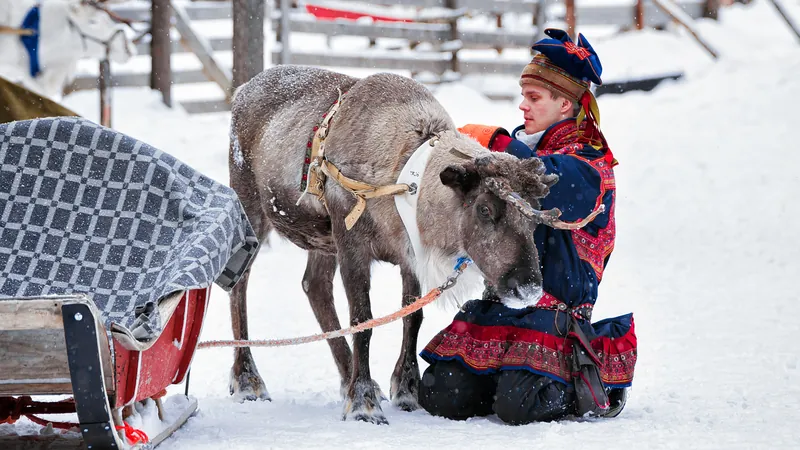
Unlocking Ancient Secrets: How Siberian Roots Connect Estonians, Finns, and Hungarians!
2025-07-27
Author: Siti
Revealing Ancestral Connections
A groundbreaking study of ancient genomes has revealed astonishing links between modern speakers of Hungarian, Finnish, and Estonian languages and their Siberian ancestors. Researchers suggest these communities share significant genetic roots dating back 4,500 years to a group residing in the forest steppes of the Altai Mountains in Central and East Asia.
The Power of Ancient DNA
The genetic investigation, published in *Nature*, examined genomes from 180 individuals who lived in northern Eurasia from the Mesolithic period to the Bronze Age (11,000 to 4,000 years ago). By comparing these genomes with over 1,300 already studied ancient remains, scientists discovered a unique DNA pattern dubbed Yakutia_LNBA.
A Closer Look at Uralic Languages
These findings are particularly intriguing for linguists, as the Uralic language family includes over 20 dialects, predominantly Estonian, Finnish, and Hungarian. Notably, speakers of Indo-European languages surrounding these groups show little to no signs of Yakutia_LNBA ancestry, reinforcing a distinct genetic lineage.
Uncovering Ancient Cultures
The Yakutia_LNBA group, identified in bones from Siberians who lived between 4,500 and 3,200 years ago, likely belonged to the Ymyyakhtakh culture, known for its ceramic and bronze artifacts. Archaeological evidence suggests that the Ymyyakhtakh culture spread its influence southward toward the modern-day borders of Russia, Mongolia, Kazakhstan, and China.
A Genetic Journey Westward
Researchers propose that the dispersal of Yakutia_LNBA ancestry aligns with the migration of early Uralic-speaking communities moving westward from Siberia. This genetic marker may indeed serve as a "tracer dye" for studying the ancient interactions of these groups.
The Complexity of Language and Genetics
However, establishing a direct correlation between genetics and language is fraught with challenges, according to experts. Catherine Frieman, an archaeologist, emphasizes the importance of understanding the complexities of multilingualism and its role in linguistic evolution.
Looking Ahead: A Multilingual Past?
While the study primarily focuses on population genomics, it raises intriguing questions about ancient societies’ linguistic landscapes. Zeng acknowledges the likelihood of multilingualism among these early groups, suggesting that migrations and cultural exchanges may have left an enduring genetic impact.
Conclusion: A Glimpse into Our Past
This research not only offers a tantalizing insight into the genetic history of Estonians, Finns, and Hungarians but also underscores the intricate tapestry of human evolution and cultural exchange across ages. The journey from Siberia to modern Europe illustrates the rich narrative of humanity's shared ancestry.

 Brasil (PT)
Brasil (PT)
 Canada (EN)
Canada (EN)
 Chile (ES)
Chile (ES)
 Česko (CS)
Česko (CS)
 대한민국 (KO)
대한민국 (KO)
 España (ES)
España (ES)
 France (FR)
France (FR)
 Hong Kong (EN)
Hong Kong (EN)
 Italia (IT)
Italia (IT)
 日本 (JA)
日本 (JA)
 Magyarország (HU)
Magyarország (HU)
 Norge (NO)
Norge (NO)
 Polska (PL)
Polska (PL)
 Schweiz (DE)
Schweiz (DE)
 Singapore (EN)
Singapore (EN)
 Sverige (SV)
Sverige (SV)
 Suomi (FI)
Suomi (FI)
 Türkiye (TR)
Türkiye (TR)
 الإمارات العربية المتحدة (AR)
الإمارات العربية المتحدة (AR)